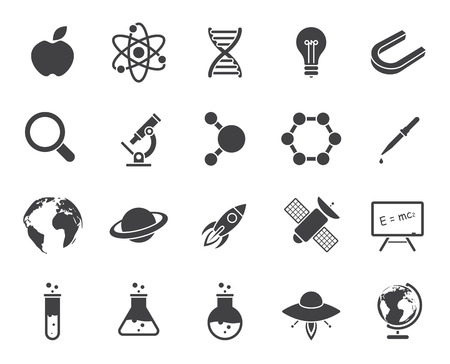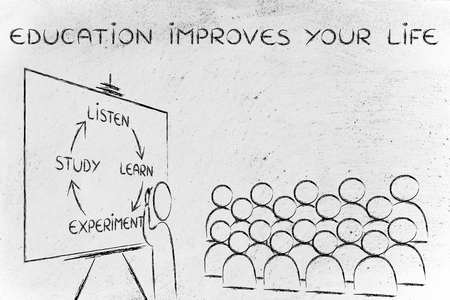很多同学习惯了找选项和原文的意思对应这种做题方法,并带到了gmat做题过程中来。对于某些细节题,这种方法也许是适用的,但是对文章主旨、结构这类和宏观方面有关的题型却完全无解。全美TOP10商科名校录取内幕泄密!GMAT分数绝不是唯一要求

1.真题实例
Traditionally,the first firm to commercialize a new technology has benefited from the unique opportunity to shape product definitions, forcing followers to adapt to a standard or invest in an unproven alternative. Today, however, the largest payoffs may go to companies that lead in developing integrated approaches for successful mass production and distribution.
Producers of the Beta format for videocassette recorders (VCRs), for example, were first to develop the VCR commercially in 1975, but producers of the rival VHS (Video Home System) format proved to be more successful at forming strategic alliances with other producers and distributors to manufacture and market their VCR format. Seeking to maintain exclusive control over VCR distribution, Beta producers were reluctant to form such alliances and eventually lost ground to VHS in the competition for the global VCR market.金牌讲师冲刺指导 独家点题GMAT综合推理
Despite Beta’s substantial technological head start and the fact that VHS was neither technically better nor cheaper than Beta, developers of VHS quickly turned a slight early lead in sales into a dominant position. Strategic alignments with producers of prerecorded tapes reinforced the VHS advantage. The perception among consumers that prerecorded tapes were more available in VHS format further expanded VHS’s share of the market. By the end of the 1980s, Beta was no longer in production.

2.实例分析
上面这篇文章出自GMAC出版的官方指南(Official Guide 12th edition)。这篇文章,如果根据传统的阅读习惯,搞清楚每个词的意思,并以此为基础概括句子的意思,进而通过句子的意思总结出段落的大意,最后归纳 出全文的意思,那么即使做到了,也一定是耗费了大量的时间和精力。
我们再看一眼这篇文章。Traditionally” 与 “Today”两个词在文中时间上的对比加上 “however” 这个转折词就能抓住第一段里前后两种观点的变化,而第二段的 “for example” 非常清楚地提示了第二段出现例子。例子与观点形成的正是学术论文中最基础的论证与被论证的关系。最后再通过对第二段首句中出现的关键词的把握也不难发 现,“Beta”、“VHS”、“VCR” 这几个关键词贯穿了第二、三段始终。所以,最终整篇文章的结构就是第一段为观点而后两段对观点进行了论证。以此为基础,文章的核心观点和具体的展开方式就基本清晰了。
用简单粗暴式的排除法直接找选项和原文的对应关系,而完全不顾题干所问究竟是什么,也是很多同学做题正确率难以提高的原因。很多同学习惯了以往在中考、高考甚至是托福做题所用的找选项和原文的意思对应这种做题方法,并带到了gmat做题过程中来。对于某些细节题,这种方法也许是适用的,但是对文章的主旨、结构这一类和宏观方面有关的题型却完全无解。哪怕是在细节题里,也存在着不同题型提问方式上的差异,直接导致了做题过程中的做题方法和挑选项的 标准有很大的不同。一起来看下面几道例题题干:
例1:The author of the passage mentions which of the following as an advantage of high-technology development?
例 2:The passage suggests which of the following about the majority of United States manufacturing industries before the high-technology development era of the 1980s?
例 3:The author mentions the behavior of the circulatory system of sea snakes when they are removed from the ocean primarily in order to
如果单看这几个问题,大家能不能看出题干所问内容的区别?或者能否看出每一个问题潜在的正确答案应该是什么样子?如果深入分析一下,不难发现例 1问的是文章提到了什么,所以正确答案一定是文章提到过的内容,而且一定是原文原句表达过的意思,所以正确答案一定是与原文中句子相同意思,只不过换了一 种表达方式的选项。
例2问的是文章暗示了什么,那么正确选项一定也会和原文有关,但意思一定不会和原文完全相同,而是原文信息的合理延伸。例3看似和例1 很像,都用了“mention”这个词,但是看到最后的“in order to”的话可以发现题目所问的其实是文章之所以提到这句话是为了干什么。因此,这种题干本质上是问句子作用,最后回答问题的正确选项一定不会是这句话本 身,而是句子背后的目的。对每一个题型深入分析,才是能够针对性高效寻找答案的基础。
以上就是本文为大家讲解的GMAT阅读应该如何抓住文章框架,望考生能够仔细阅读,从中学到自己欠缺的知识。
(本文观点选自腾讯教育,不代表本站立场。如有任何问题,请联系小站进行修改或删除。)
相关推荐
-
如何培养阅读能力?GMAT阅读提升有妙招
2015-02-22![如何培养阅读能力?GMAT阅读提升有妙招]()
-
【高分必备】GMAT阅读要注重内容记忆能力
2015-09-29![【高分必备】GMAT阅读要注重内容记忆能力]()
-
GMAT阅读备考要两手抓 练习总结一个都不能少
2015-11-16![GMAT阅读备考要两手抓 练习总结一个都不能少]()
-
点评GMAT阅读快速解题的5个必备步骤
2015-09-07![点评GMAT阅读快速解题的5个必备步骤]()
-
应对难题也要有原则 GMAT阅读解题心得分析介绍
2015-08-10![应对难题也要有原则 GMAT阅读解题心得分析介绍]()
-
掌握关键词才能做好阅读 GMAT核心词汇一览
2015-10-16![掌握关键词才能做好阅读 GMAT核心词汇一览]()
-
减少GMAT阅读考试错误 这几点你需要做到
2014-12-31![减少GMAT阅读考试错误 这几点你需要做到]()
-
如何培养阅读习惯?GMAT备考心得详细介绍
2015-09-23![如何培养阅读习惯?GMAT备考心得详细介绍]()
-
GMAT阅读提升技巧 整体把握文章内容是关键
2015-02-24![GMAT阅读提升技巧 整体把握文章内容是关键]()
-
GMAT阅读从此不再难 抓住结构就能秒解难题
2015-01-30![GMAT阅读从此不再难 抓住结构就能秒解难题]()
-
【备考心经】全面介绍GMAT阅读复习2大重点
2015-11-04![【备考心经】全面介绍GMAT阅读复习2大重点]()
-
详解GMAT阅读5大解题思路
2015-10-26![详解GMAT阅读5大解题思路]()
-
如何提升解题速度?GMAT阅读快速答题有窍门
2015-01-27![如何提升解题速度?GMAT阅读快速答题有窍门]()
-
GMAT阅读需要提速 快速解题实战方法分享
2015-01-06![GMAT阅读需要提速 快速解题实战方法分享]()
-
考G新人突破零基础 GMAT阅读入门备考方法分享
2014-07-25![考G新人突破零基础 GMAT阅读入门备考方法分享]()
-
【提分技巧】GMAT阅读题防错要掌握这些技巧
2014-04-17![【提分技巧】GMAT阅读题防错要掌握这些技巧]()
-
【解题秘籍】GMAT阅读各类真题要点讲解
2015-09-18![【解题秘籍】GMAT阅读各类真题要点讲解]()
-
详解GMAT阅读答题2大常用秒选技巧
2015-08-28![详解GMAT阅读答题2大常用秒选技巧]()
-
循序渐进才能做好难题 详解GMAT阅读解题标准步骤
2015-08-11![循序渐进才能做好难题 详解GMAT阅读解题标准步骤]()
-
【解题秘诀】分享GMAT阅读备考三读技巧
2015-06-10![【解题秘诀】分享GMAT阅读备考三读技巧]()
定制专属课程规划
领取成功
添加助教,定制你的专属课程规划

每日提分任务
专业提分资料
全程督学答疑





















